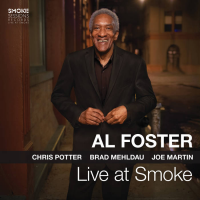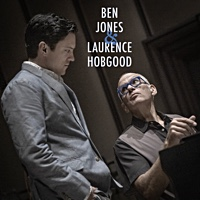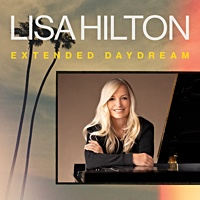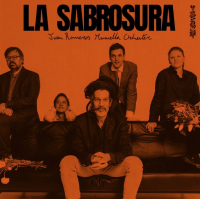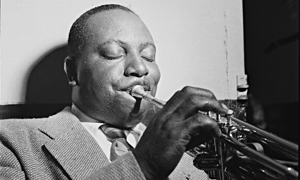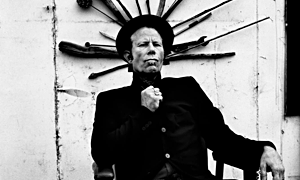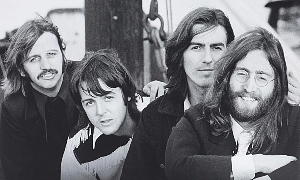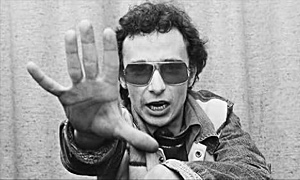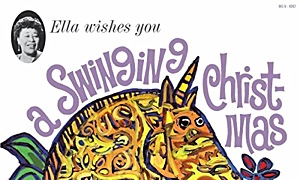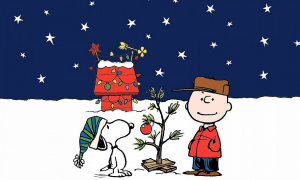Home » Jazz Articles » Book Review » The Jazz Barn: Music Inn, the Berkshires, and the Place ...
The Jazz Barn: Music Inn, the Berkshires, and the Place of Jazz in American Life
No other bricks-and-mortar institution, no other physical space, no other place better registered the pulsing changes in jazz music and jazz musicking over the course of the 1950s and into the New Frontier future...
—John Gennari
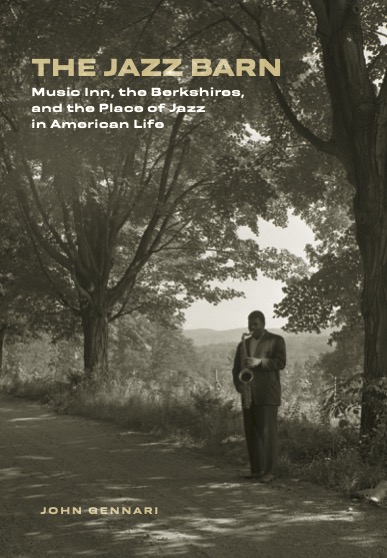 The Jazz Barn: Music Inn, the Berkshires, and the Place of Jazz in American Life
The Jazz Barn: Music Inn, the Berkshires, and the Place of Jazz in American Life John Gennari
264 Pages
ISBN: #978-1-68458-285-3
Brandeis University Press
2025
Award-winning author, University of Vermont professor and Berkshire County native John Gennari encapsulates his fascinating history of The Jazz Barn simply. "This a book about what happened in the 1950s in a barn, icehouse, and greenhouse and in the rolling meadows, winding wooded paths, and rock brook edges of an estate property overlooking a lake in the verdant Berkshire Hills of Western Massachusetts," he writes.
Underpinnings
The book is divided into six parts: Introduction (Jazz on the Hillside), Conclusion (The Place to Be) and four chapters (1: The Town and the City; 2: Marshall Stearns, McCarthyism, and the Jazz Roundtables; 3: The Barn, the Eagle, and the "Negro Gentleman"; 4: Lenox and the Shape of Jazz to Come).The author's work draws on Kimberly Hannon Teal's Jazz Places: How Performance Spaces Shape Jazz History (University Of California Press, 2021), which looks at ways in which physical spaces frame and form the music played and heard within them, how these places reverberate with not only the sounds but also the ethics and aesthetics of the people involved. Gennari also brings into play Christopher Small's notion of "musicking" (Musiking: The Meanings of Performance and Learning, Wesleyan University Press, 1998), a verb that describes not just the act of music-making but all of the activities and thoughts and memories of those involved in the process—audiences, writers, club owners, photographers, local presses—everyone.
The Jazz Barn is filled with remarkable photographs by Clemens Kalischer, a German American holocaust survivor who captured the grain of everyday life there; beautiful images of people engaged in philosophical dialogue, musical analysis, listening to and discussing jazz, singing in classrooms, practicing in the fields and woods. These are nothing like glamorous publicity photos. Instead, they demonstrate that the history of the place and the music is "not just one of dazzling sound but also of imagery replete with beauty, cultural meaning, and social importance."
The study is broadly ethnomusicological, but not in an overtly theoretical way. There is virtually no jargon. Gennari describes his research this way: "I'm really interested in how Billie Holiday, Sarah Vaughan, Dinah Washington, Anita O'Day, June Christy, and Chris Connor sang on the stage of the Music Barn. But I'm also interested in how people traveled to the concerts, whether anything important happened offstage before and after the concerts, what was written about the concerts for the next day's Berkshire Eagle, and how the performances related to what was said by the previous week's guest lecturer."
Cast of Characters
Jazz fans who may not have heard of The Jazz Barn or Music Inn or the Lenox School of Jazz or the Jazz Roundtables and concerts held there are likely to have gotten wind of the place, subliminally, through tunes like Randy Weston's "Berkshire Blues," John Lewis' "Fugue for Music Inn," Dizzy Gillespie's "Wheatleigh Hall," Jimmy Giuffre's "Blues in the Barn" or Ran Blake's "Blues for Wheatleigh." And you probably know some of the alumni of the short-lived but influential jazz school (1957-1960), including composer-producer Arif Mardin, pianist Steve Kuhn, singer-songwriter Bob Dorough, trombonist-cellist and educator David Baker and trumpeter Don Ellis. Ornette Coleman and Don Cherry attended under one of Nesuhi Ertegun's Atlantic Records scholarships.The names of faculty will, likewise, be familiar: Gillespie, Giuffre, The Modern Jazz Quartet, Oscar Peterson, Jim Hall, Max Roach, Lee Konitz, George Coleman, Bob Brookmeyer, Bill Evans, Kenny Dorham. Albums recorded there include The Modern Jazz Quartet at Music Inn (1956), Sonny Rollins at Music Inn (MetroJazz, 1959) and Brubeck's Time Further Out (Columbia, 1961), among others. And you may recognize some names among the extensive roster of distinguished musicians and writers who participated in Jazz Roundtables, the guest artists and lecturers—like Nigerian drummer Olatunji, historians Gunther Schuller and Marshall Winslow Stearns or gospel queen Mahalia Jackson.
Wheatleigh, the Barbers and Others
In Chapter 1, Gennari locates Wheatleigh and the story of the Barbers, Philip and Stephanie, New Yorkers who purchased the service area—barn, farmland, stable, icehouse and pottery shed—of a formerly opulent 250-acre late-19th-century estate and turned it into a jazz space. The property is situated walking distance from Tanglewood, the summer home of the Boston Symphony.During the Depression, Philip had headed the Federal Theatre Project (FTP), a Works Project Administration program created under Franklin Delano Roosevelt's New Deal. That is, until a 1938 production of composer-lyricist Marc Blitzstein's The Cradle Will Rock, directed by actor-director Orson Welles, provoked an investigation by the newly minted House Un-American Activities Committee, headed at the time by Martin Dies. The committee cut funding to the project, alleging communist infiltration, saying that "racial equality forms a vital part of the Communist dictatorship." (Things got worse in the McCarthy Era of the late 1940s and early '50s, as history relates.) Philip went on to found a successful PR firm, for which his wife-to-be, Stephanie Frey served as publicity director. After having made a good chunk of change with the firm, the Barbers left the city to seek "fresh air and freedom, rugged individualism, beauty, trees and time and place for friends."
So the story of The Jazz Barn is that of the Barbers and the musicians and audiences, the children they brought along, the critics, the scholars and the townspeople. The author's perspective is that of a local who, like his neighbors, is proud of his hometown in the Berkshires, a place of beauty and the birthplace of such cultural icons as Herman Melville and W.E.B. Du Bois. But as the son of working-class Italian immigrants, this pride has been tempered by "a feeling of otherness that was gently, sometimes inadvertently but nevertheless unmistakably, visited on my family by townspeople who considered themselves the true stewards of the town, its land, and its history."
Randy Weston
Weston, the great pianist, emerges as a central figure in the narrative, which begins with the story of his discovery of the place as a youth on a summer evening. He had a seasonal job down the road at a camp for European Jewish refugees. He and two of his colleagues (classical musicians, white women, middle-aged), had heard that there was a concert at the Jazz Barn and were eager to attend. They had no car at their disposal and no ride, so they traipsed through the woods together. (During the 1950s, that alone would surely have caused his mother concern had she known.)But for Weston it was the beginning of a lifelong adventure and a pathbreaking career. Gennari affirms that, "for many people in the Berkshires, there would be no musician more strongly associated with Music Inn than Randy Weston." He was not on faculty at the school, nor did he concertize on the premises during the time it was in operation. Nonetheless, "his association with Music Inn, first as a breakfast cook, then as an auditor of historic jazz round tables, and finally as a major musician and culture worker who triangulated Black Brooklyn, white Lenox, and northern Africa stands as one of the most important legacies of the institution." Weston's legacy—shaped by music and ideas exchanged and articulated by Gillespie, Stearns, Duke Ellington and others present in and around the barn—centralizes Africa and the African Diaspora, changing the music, creating space for the blues-first sound of hard bop, leading the way for Black music collectives and other developments in the '60s, such as the Association for the Advancement of Creative Musicians (AACM) and the Art Ensemble Of Chicago.
Conclusion
The book provides ample evidence in support of the author's assertion that "no other bricks-and-mortar institution, no other physical space, no other place better registered the pulsing changes in jazz music and jazz musicking over the course of the 1950s and into the New Frontier future than Music Inn. It was there, off Hawthorne Street in Lenox," as he writes, "where the jazz mainstream and the jazz tradition crystallized not just as concepts or ideas but as courses of study and methods of sonic practice. And in 1959 it was there, more sharply and robustly than anywhere else, where the shape of jazz to come was meditated on, mapped out, argued over, imagined, and felt." The Jazz Barn is engrossing and essential reading for those interested in developments in jazz in the 1950s and beyond.Tags
Book Review
Randy Weston
Katchie Cartwright
United States
Massachusetts
Brandeis University Press
Berkshire County
Billie Holiday
Sarah Vaughan
Dinah Washington
Anita O'Day
June Christy
Chris Connor
John Lewis
Dizzy Gillespie
Jimmy Giuffre
Ran Blake
Arif Mardin
Steve Kuhn
Bob Dorough
David Baker
Don Ellis
Ornette Coleman
Don Cherry
Nesuhi Ertegun
Atlantic Records
Modern Jazz Quartet
oscar peterson
Jim Hall
Max Roach
Lee Konitz
George Coleman
Bob Brookmeyer
Bill Evans
Kenny Dorham
Marshall Stearns
Gunther Schuller
Olatunji
Geoffrey Holder
Mahalia Jackson
Marc Blitzstein
duke ellington
PREVIOUS / NEXT
Support All About Jazz
 All About Jazz has been a pillar of jazz since 1995, championing it as an art form and, more importantly, supporting the musicians who make it. Our enduring commitment has made "AAJ" one of the most culturally important websites of its kind, read by hundreds of thousands of fans, musicians and industry figures every month.
All About Jazz has been a pillar of jazz since 1995, championing it as an art form and, more importantly, supporting the musicians who make it. Our enduring commitment has made "AAJ" one of the most culturally important websites of its kind, read by hundreds of thousands of fans, musicians and industry figures every month.






